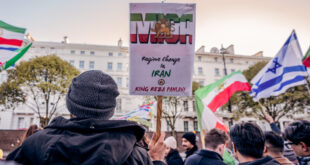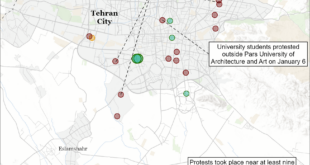 Nine US warships carrying 17,000 personnel entered the Gulf on Wednesday in a show of force off Iran’s coast that navy officials said was the largest daytime assembly of ships since the 2003 Iraq war.
Nine US warships carrying 17,000 personnel entered the Gulf on Wednesday in a show of force off Iran’s coast that navy officials said was the largest daytime assembly of ships since the 2003 Iraq war.
Â
US Navy officials said Iran had not been notified of plans to sail the ships, which include two aircraft carriers, through the Straits of Hormuz, a narrow channel in international waters off Iran’s coast and a major artery for global oil shipments. Rear Admiral Kevin Quinn, who is leading the group, said the ships would conduct exercises as part of a long-planned effort to reassure regional allies of US commitment to Gulf security. “There’s always the threat of any state or non state actor that might decide to close one of the international straits, and the biggest one is the Straits of Hormuz,” he told reporters on board the USS John C. Stennis aircraft carrier.
Â
“What is special about this is that you have two strike groups. Everybody will see us because it is in daylight.” Most US ships pass through the straits at night so as not to attract attention, and rarely move in such large numbers.
Â
Navy officials said the decision to send a second aircraft carrier was made at the last minute, without giving a reason. The group of ships, carrying about 140 aircraft scheduled to participate in the exercises that will take place over the next few weeks, crossed at roughly 0355 GMT. Tension between the United States and Iran over Tehran’s nuclear ambitions and Iraq has raised regional fears of a possible military confrontation that could hit Gulf economies and threaten vital oil exports.
Â
About 40 percent of globally traded oil passes through the Straits of Hormuz and oil climbed towards on the US show of force that coincided with the UN atomic watchdog’s report on the Islamic Republic’s nuclear program.
Â
Highlighting the dangers of accidental escalation, a Navy official said the USS Stennis had received nine enquiries from nearby countries, two from Oman and seven from Iran, including one from an Iranian vessel that sailed close by.
Â
The maneuver comes less than two weeks after US Vice President Dick Cheney, speaking aboard the Stennis during a tour of the Gulf, said Washington would stand with others to prevent Iran gaining nuclear weapons and dominating the region. On a visit to Abu Dhabi a few days later, Iranian President Mahmoud Ahmadinejad threatened severe retaliation if the United States attacked his country, which is locked in a standoff with the United States over its nuclear program.
Â
He also urged Gulf countries to get rid of foreign forces, blaming them for insecurity in the region. The United States accuses Iran of trying to produce nuclear weapons, and has sought tougher UN sanctions against Iran. Iran says its nuclear ambitions are for energy purposes only.
 Eurasia Press & News
Eurasia Press & News



